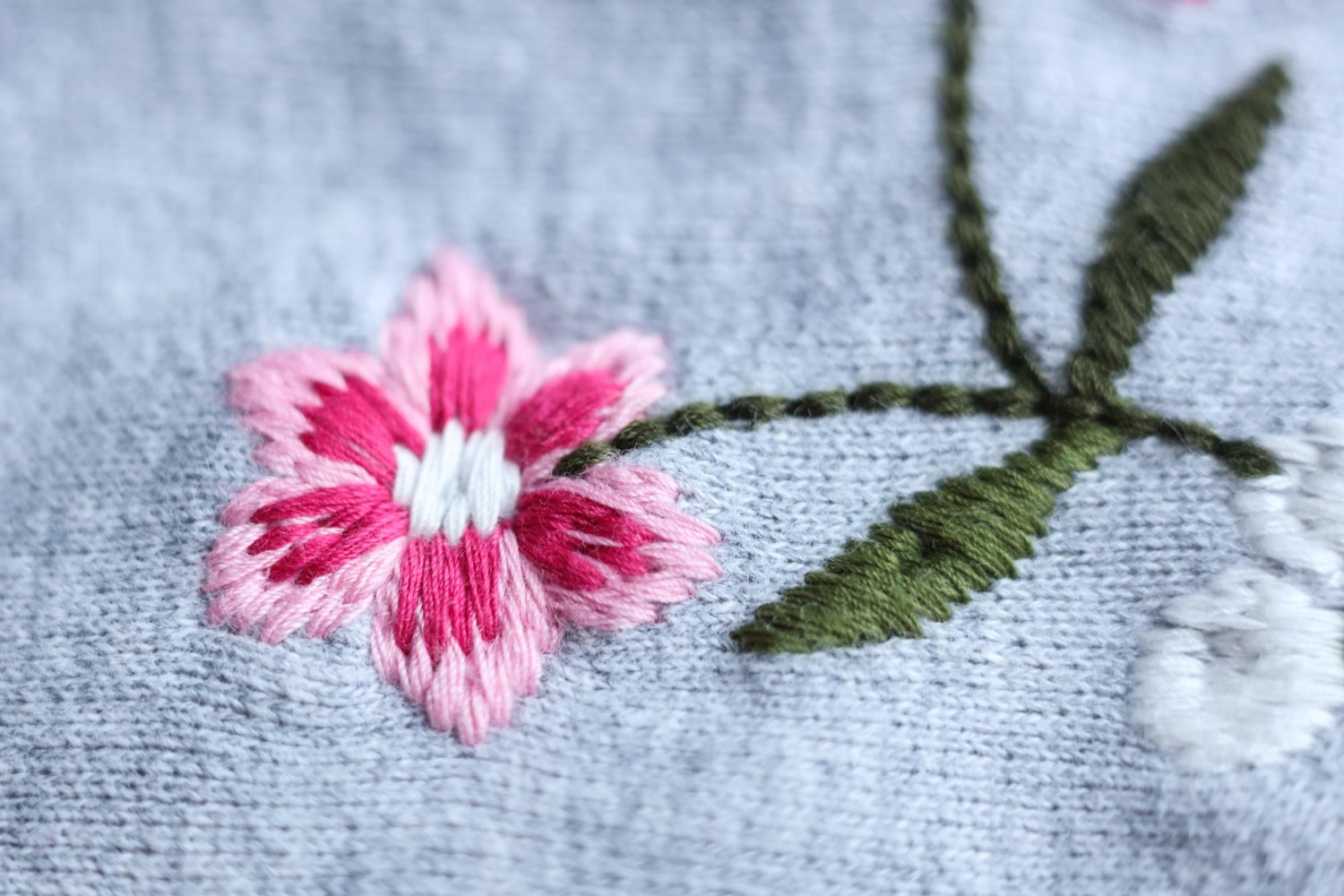Mending a hole with embroidery: when repair becomes decoration
In the age of fast fashion and planned obsolescence, the choice to mend a hole with embroidery represents a countercultural gesture. It is not just a way to extend the life of a garment, but an action that blends sustainability, creativity and craftsmanship. Embroidery, in this context, becomes a tool of aesthetic enhancement, capable of transforming a small imperfection into a focal point rich in personality.
A new aesthetic of repair
The practice of visible mending-that is, visible repair-has become a real trend, especially among brands and designers promoting responsible fashion. Mending no longer means hiding: it means highlighting the story of a garment, making it unique and unrepeatable. In this scenario, embroidery proves to be one of the most expressive and versatile techniques.
With needle, thread and a good dose of inventiveness, it is possible not only to close a tear or cover a hole, but to create a decorative pattern that complements (or deliberately contrasts) with the texture and color of the original fabric.

Techniques and approaches to embroidering over a hole
To achieve an aesthetically pleasing and technically correct result, the choice of technique is crucial. When deciding to mend with embroidery, it is important to stabilize the damaged fabric, perhaps reinforcing it with an organza or tulle base.
One of the simplest but most effective techniques is to use cross-stitch embroidery to cover the damaged area with a geometric or floral design. This approach is particularly effective on denim, linen, or compact cotton, where the regularity of the weave facilitates the symmetry of the design.
Tailored creativity: every hole a story
There are no fixed rules for mending with embroidery: every intervention can (and should) be customized. A small hole on a shirt can turn into a dragonfly embroidered with metallic threads; a tear on a coat can become an abstract landscape in bouclé wool.
Many contemporary designers have made this practice a hallmark. The ability to read damage not as a defect but as a creative starting point is what distinguishes a simple mending from an intervention of aesthetic and sartorial value.
Embroidery and the culture of repair
The return to manual skills and repair is also a return to a slower and more conscious way of conceiving fashion. Mending with embroidery is a gesture that requires time, care and attention. It is, for all intents and purposes, an artisanal ritual that reestablishes the bond between the wearer of the garment and the worker.
In this sense, embroidery is connected to a long tradition of decorative and functional techniques. Just think of methods such as coiling work, which combine visual refinement and structural strength, ideal for covering large areas or strengthening delicate fabrics.
Conclusion: imperfection as a value
Mending a hole with embroidery is more than an aesthetic solution. It is a statement of intent: to value imperfection, to create beauty from a limitation, to reaffirm the value of craftsmanship in an industry that often rewards the ephemeral.
Every thread, every stitch, every color choice tells something about the person who embroidered and the person who wears the garment. And it is precisely in this relationship, so deep and personal, that lies the real strength of a mending that becomes a work of art.